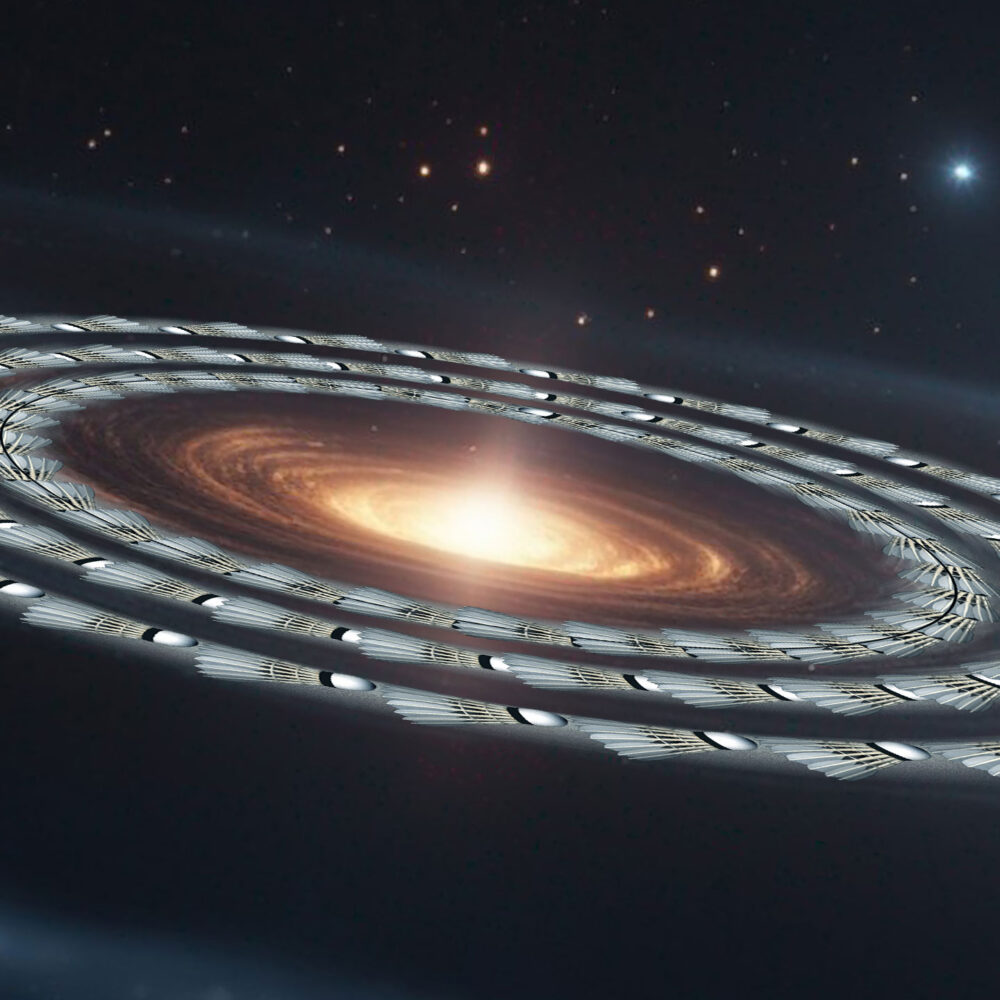Dust grains in protoplanetary disks align via the same aerodynamics as the sport.
The birth of a planet starts with a microscopic grain floating in a protoplanetary disk, a swirling cloud of gas and other particles surrounding a young star. How the gas and dust interact has implications for the formation of new worlds.
“Those teeny grains—those are the building blocks of planets,” said Zhe-Yu Daniel Lin, an astrophysicist at the Carnegie Institution for Science. He describes the shape of the grains as “potatoes.”
It’s hot and breezy in the interstellar cloud, but it's not entirely chaotic. Astronomical observations have found that the grains, instead of tumbling through space, are oriented neatly along their orbital trajectories. To explain how the grains float in formation, new research led by Lin leans on the working principle behind an Earthly object: the badminton shuttle.
Aligning the dust
The badminton shuttle, or "birdie," consists of a weighted cork nose and a conical skirt of feathers. Thanks to its construction, when the shuttle moves, its lighter end will catch more air and let the heftier end lead. If you’ve ever watched or played badminton, you know that the birdie automatically swivels so that the nose always points forward.
With a little assistance in the form of drag from the wispy gas in the disk, protoplanetary grains could be arranging themselves through a similar mechanism—as long as the weight distribution in each fleck is off-center. That requirement isn’t a big lift: Lin’s team calculated that a 1 percent offset in the center of mass is sufficient to cause alignment. Nature usually doesn’t cook up perfectly symmetrical objects, which would allow these bitty birdies of a feather to flock together.
Although the gas is much more sparse than Earth’s atmosphere, it’s substantial enough to generate drag and force the grains to self-order.
It might not come as a surprise to learn that Lin is a badminton player. "The experience of playing badminton is really the thing that kick-started the idea and led me to ask the right questions," he said.
Previous explanations attribute the dust alignment to the magnetic influence of the central star, the physics of which can be complicated and not always intuitive. The beauty of the proposed birdie mechanism is its simplicity. “It’s a very good first step,” said Bing Ren, an astronomer at France’s Côte d'Azur Observatory who wasn’t involved in the study.
Still, the birdie-alignment hypothesis is just that—a hypothesis. To confirm whether it holds water, scientists will need to throw their full observational arsenal at protoplanetary disks, such as viewing them at different wavelengths, to sniff out the finer details of particle-gas interactions.
Tracing invisible gas
Real-life protoplanetary disks are likely more complicated than a uniform squadron of space potatoes suspended in thin air. Ren suspects that the grains come in various shapes, sizes, and speeds. Nevertheless, he says Lin’s study is a good foundation for computer models of interstellar clouds, onto which scientists can tack layers of complexity.
The new research points a way forward for probing protoplanetary disks, particularly gas behavior. Given that the grains trace the gas direction, studying dust organization using existing tools like polarized light can allow scientists to map a disk’s aerodynamic flow. Essentially, these grains are tiny flags that signal where the wind blows.
As granular as the details are, the dust alignment is a small but key step in a grand journey of particle-to-planet progression. The nitty-gritty of a particle’s conduct will determine its fate for millions of years—perhaps the primordial seed will hoover up hydrogen and helium to become a gas giant or amass dust to transform into a terrestrial world like Earth. It all starts with it flailing or keeping steady amid a sea of other specks.
Monthly Notices of the Royal Astronomical Society, 2024. DOI: 10.1093/mnras/stae2248 (About DOIs)
Shi En Kim is a DC-based freelance journalist who writes about health, the environment, technology, and the physical sciences. She and three other journalists founded Sequencer Magazine in early 2024. Occasionally, she creates art to accompany her writings or does it simply for fun. Follow her on Twitter at @goes_by_kim, or see more of her work on her personal website.
RIP Matrix | Farewell my friend ![]()
Hope you enjoyed this news post.
Thank you for appreciating my time and effort posting news every day for many years.
2023: Over 5,800 news posts | 2024 (till end of September): 4,292 news posts



3175x175(CURRENT).thumb.jpg.b05acc060982b36f5891ba728e6d953c.jpg)
Recommended Comments
Join the conversation
You can post now and register later. If you have an account, sign in now to post with your account.
Note: Your post will require moderator approval before it will be visible.